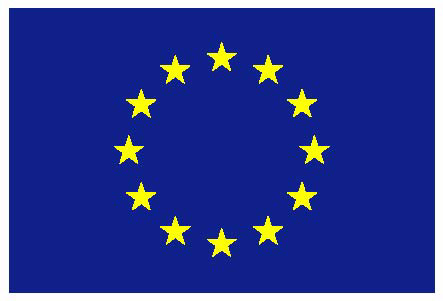grr13
Summary
Schaub, , Michael T. AND Delvenne, , Jean-Charles AND Yaliraki, , Sophia N. AND Barahona, , Mauricio (2012) Markov Dynamics as a Zooming Lens for Multiscale Community Detection: Non Clique-Like Communities and the Field-of-View Limit. PLoS ONE, 7(2):e32210. ((URL))
Abstract
<p>In recent years, there has been a surge of interest in community detection algorithms for complex networks. A variety of computational heuristics, some with a long history, have been proposed for the identification of communities or, alternatively, of good graph partitions. In most cases, the algorithms maximize a particular objective function, thereby finding the 'right' split into communities. Although a thorough comparison of algorithms is still lacking, there has been an effort to design benchmarks, i.e., random graph models with known community structure against which algorithms can be evaluated. However, popular community detection methods and benchmarks normally assume an implicit notion of community based on clique-like subgraphs, a form of community structure that is not always characteristic of real networks. Specifically, networks that emerge from geometric constraints can have natural non clique-like substructures with large effective diameters, which can be interpreted as long-range communities. In this work, we show that long-range communities escape detection by popular methods, which are blinded by a restricted 'field-of-view' limit, an intrinsic upper scale on the communities they can detect. The field-of-view limit means that long-range communities tend to be overpartitioned. We show how by adopting a dynamical perspective towards community detection <xref ref-type="bibr" rid="pone.0032210-Delvenne1">[1]</xref>, <xref ref-type="bibr" rid="pone.0032210-Lambiotte1">[2]</xref>, in which the evolution of a Markov process on the graph is used as a zooming lens over the structure of the network at all scales, one can detect both clique- or non clique-like communities without imposing an upper scale to the detection. Consequently, the performance of algorithms on inherently low-diameter, clique-like benchmarks may not always be indicative of equally good results in real networks with local, sparser connectivity. We illustrate our ideas with constructive examples and through the analysis of real-world networks from imaging, protein structures and the power grid, where a multiscale structure of non clique-like communities is revealed.</p>
Bibtex entry
@ARTICLE { grr13,
AUTHOR = { Schaub, , Michael T. AND Delvenne, , Jean-Charles AND Yaliraki, , Sophia N. AND Barahona, , Mauricio },
JOURNAL = { PLoS ONE },
PUBLISHER = { Public Library of Science },
TITLE = { Markov Dynamics as a Zooming Lens for Multiscale Community Detection: Non Clique-Like Communities and the Field-of-View Limit },
YEAR = { 2012 },
MONTH = { feb },
VOLUME = { 7 },
URL = { http://dx.doi.org/10.1371%2Fjournal.pone.0032210 },
PAGES = { e32210 },
ABSTRACT = { <p>In recent years, there has been a surge of interest in community detection algorithms for complex networks. A variety of computational heuristics, some with a long history, have been proposed for the identification of communities or, alternatively, of good graph partitions. In most cases, the algorithms maximize a particular objective function, thereby finding the 'right' split into communities. Although a thorough comparison of algorithms is still lacking, there has been an effort to design benchmarks, i.e., random graph models with known community structure against which algorithms can be evaluated. However, popular community detection methods and benchmarks normally assume an implicit notion of community based on clique-like subgraphs, a form of community structure that is not always characteristic of real networks. Specifically, networks that emerge from geometric constraints can have natural non clique-like substructures with large effective diameters, which can be interpreted as long-range communities. In this work, we show that long-range communities escape detection by popular methods, which are blinded by a restricted 'field-of-view' limit, an intrinsic upper scale on the communities they can detect. The field-of-view limit means that long-range communities tend to be overpartitioned. We show how by adopting a dynamical perspective towards community detection <xref ref-type="bibr" rid="pone.0032210-Delvenne1">[1]</xref>, <xref ref-type="bibr" rid="pone.0032210-Lambiotte1">[2]</xref>, in which the evolution of a Markov process on the graph is used as a zooming lens over the structure of the network at all scales, one can detect both clique- or non clique-like communities without imposing an upper scale to the detection. Consequently, the performance of algorithms on inherently low-diameter, clique-like benchmarks may not always be indicative of equally good results in real networks with local, sparser connectivity. We illustrate our ideas with constructive examples and through the analysis of real-world networks from imaging, protein structures and the power grid, where a multiscale structure of non clique-like communities is revealed.</p> },
NUMBER = { 2 },
DOI = { 10.1371/journal.pone.0032210 },
}




